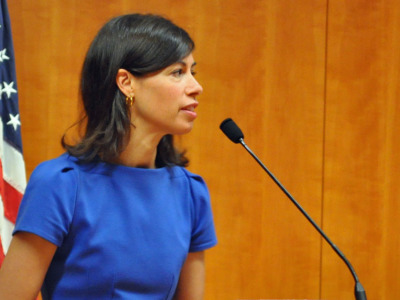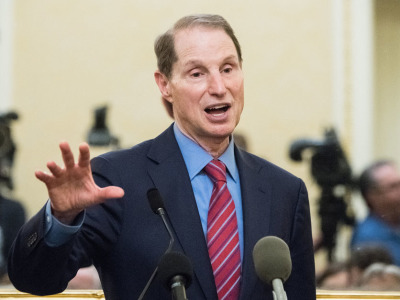State broadband offices and researchers say new maps from the Federal Communications Commission that will be used to allocate billions of dollars in funding have failed to catch large swathes of the population without adequate internet speeds.
The maps will be used by the National Telecommunications and Information Administration to divvy up $65 billion in broadband funding to states and service providers. The agency plans to rely largely on the maps when allocating funds for the largest of these programs, the $42 billion Broadband Equity, Access and Deployment Program, or BEAD.
Previous FCC broadband maps, by FCC chair Jessica Rosenworcel’s own admission, relied on “information that failed to paint the whole picture of who did and who did not have internet.” The agency used census-block-level data to craft the visuals, which lacked location-specific information separating different households in the same block.
The agency has revised its process for the new maps, partially due to legislation from Congress. The Broadband Data Act, signed in 2020, required the FCC to allow citizens to continually update maps based on citizen-filed challenges. The NTIA set a Jan. 13 deadline for challenges to be submitted.
So far, states and researchers have found glaring flaws in the maps.
The FCC says about 59,000 people are unserved or underserved in Vermont. But Christine Hallquist, executive director of the Vermont Community Broadband Board, says the true number is “probably well over 100,000 addresses.”
The board filed a location challenge in October after finding 67,274 addresses in a state database that are not present in the FCC map. It filed another challenge of 45,000 addresses on Jan. 13.
Researchers at the University of Kansas said their own broadband speed survey only matched up with the FCC’s map of Kansas 25% of the time. The FCC data suggests that 85.8% of Kansans live in areas that have download speeds of more than 100 megabits per second, but the researchers’ survey suggested that only 43.5% of Kansans saw those speeds.
 FCC Chair Jessica Rosenworcel
FCC Chair Jessica Rosenworcel
Donna Ginther, one of the researchers that helped conduct the survey, said the university has been working with the state of Kansas to submit challenges to the FCC. She said she hopes it will help the agency better guide broadband funding where it needs to go.
“My hope is that when they look at the disparity between what the FCC map says and what the challenges say, that they will revisit their emphasis on the FCC maps,” Ginther said. “That would be, I think, a positive outcome.”
The Colorado State Broadband Office submitted around 1,500 availability challenges and has been encouraging citizens to continue to file them if they notice inaccuracies, according to its executive director, Brandy Reitter.
“Maps are changing and they’re always iterative, so we’re looking to close that gap with the FCC as soon as possible because we want to make sure everybody has the best data to make the most informed decision,” she said.
Emily Buckman, a director of government affairs at the American Farm Bureau Federation, is concerned the maps will only reflect the challenges that were filed in mid-January and not any submitted after. She said it’s likely the maps will have “significant inaccuracies” if they are based on feedback through Jan. 13 due to the limited window of time provided by NTIA.
The FCC released the first version of the maps on Nov. 18, giving the public until Jan. 13 to challenge them. Buckman, Reitter and Hallquist all believe that was not enough time for citizens and states to fully analyze the information. This time frame also overlapped with the Christmas and New Year's holidays, a time of year when many people were too busy to submit challenges.
“It’s a big program that the NTIA is trying to roll out,” Buckman said. “If you’re basing it off of a map that contains millions of locations, the map should be accurate.”
The public can still file challenges, but it’s unclear whether they will have an impact on the BEAD allocations, which will be announced in June. Sen. Ron Wyden, D-Ore., said in a Jan. 17 press release that both Commerce Secretary Gina Raimondo and Assistant Commerce Secretary and NTIA Administrator Alan Davidson told him that challenges submitted after Jan. 13 would still be considered.
 Sen. Ron Wyden, D-Ore.
Sen. Ron Wyden, D-Ore.
Buckman said she expects to see legislators scrutinize the program as soon as Congress finishes organizing for the upcoming term. Some already have.
Lawmakers from Georgia, Nevada, New York, have all called for the NTIA to extend the challenge process by an additional 60 days to give their states time to verify and submit accurate data.
Sen. Roger Marshall, R-Kan., has even asked the agency for a 90-day extension, though Hallquist said an extension longer than 90 days would present its own challenges.
“We wouldn’t want it any longer than that because it’s going to delay our funding,” Hallquist told Agri-Pulse.
Hallquist also believes the FCC’s current data collection process is “flawed.” Companies self-report the speeds to the FCC under the current process, which Hallquist says incentivizes them to oversell their speeds. Then it’s up to the consumer to prove that they are not getting the service that is reported.
“The onus should be on the telecom companies to prove they have the service, not on the consumer to prove they don’t have the service,” she said.
For more news, go to www.Agri-Pulse.com.


